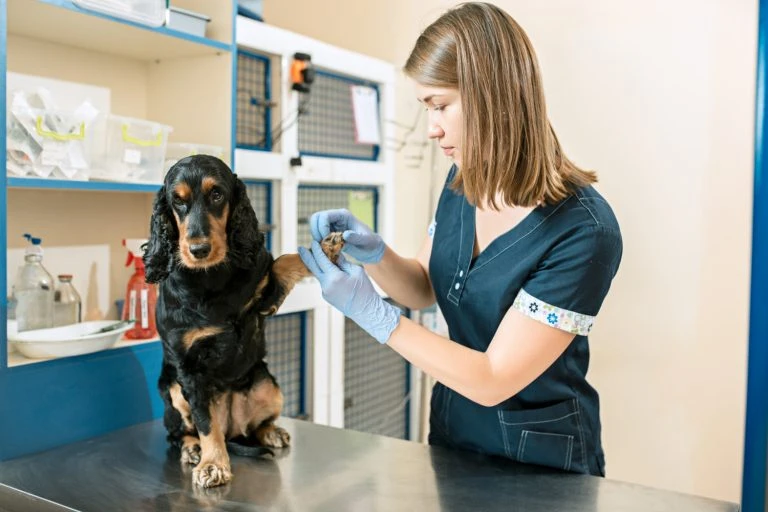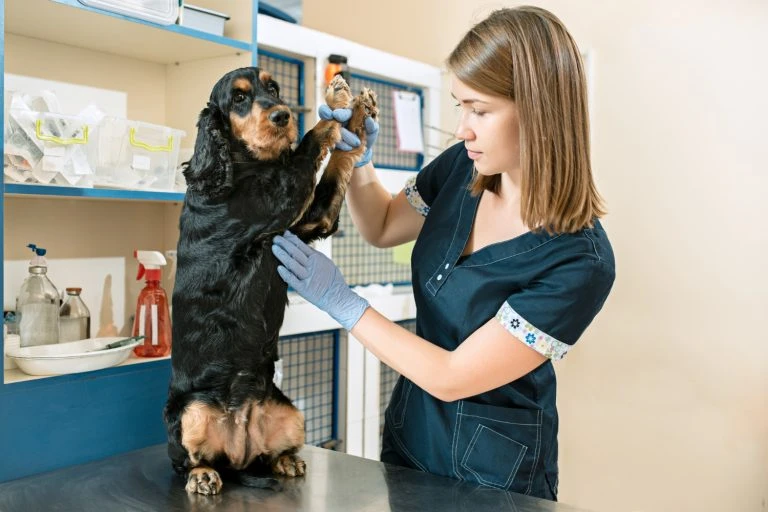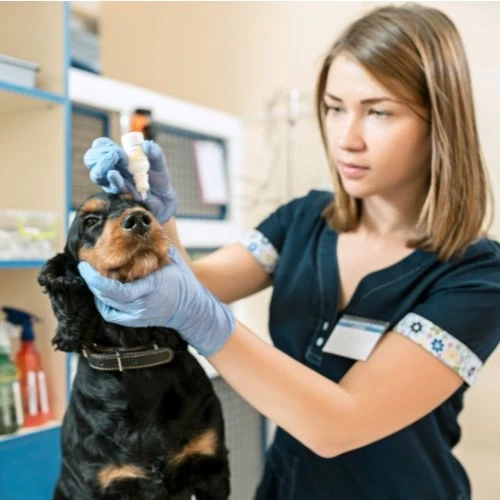As pet owners, we recognize that our furry friends may occasionally get into trouble or accidents, resulting in injuries. Dogs, like humans, require prompt and adequate first aid to treat wounds and avoid severe problems.
Here, we\'ll look at the most important aspects of veterinary wound care as well as the 10 things you should have in your dog\'s first aid kit.

The Importance of First Aid Products for Dogs
No matter how hard you try to protect your beloved pet, accidents can still happen. Most pet owners couldn\'t envision anything ever happening to their fur child.
In the United States, a dog is estimated to have emergency vet care every 2.5 seconds, and you never know when your dog will get into trouble.
Every second counts in medical emergencies, so it\'s critical to act quickly by understanding the dangers and planning how to respond ahead of time.
10 Compulsory Items You Must Have in the Dog First Aid Kit
1. General Bandage Supplies
Bandages are an essential component of every pet\'s first aid kit. In most instances, the bandage you apply to an injury will be temporary until you visit your veterinarian. The bandages help to support and prevent contamination in your pet\'s wound. Ensure dog bandages are comfy enough not to fall off but not so tight as to occlude blood flow.
Essential bandage supplies for a veterinary wound care first-aid kit:
- Gloves
- Self-adhering wrap (dog bandages)
- Tweezers
- Gauze pads and roll
- Tape
- Blunt-tipped scissors
2. Emergency Contact Card
You must specify a devoted contact card to write down the phone numbers of your veterinarian. It includes the closest 24-hour veterinary emergency hospital and the Pet Poison Helpline®. Adding these numbers to your phone contacts is helpful for fast access.
You can list the types of pets you have and your emergency veterinarian contacts on a wallet card or portable sticker. Place a sticker at every entrance to your home for emergency responders, and keep the card in your wallet or give it to a pet sitter while you are away.
Additionally, try to make a medical history record of your pet, either manually or electronically. It will help the veterinarian access your dog’s previous diseases and ensure fast treatment for the current issue.
3. Veterinary Wound Care
Your dog\'s wound may not become infected if you use an antibacterial wipe, spray, or ointment suitable for pets. Before applying dog bandages, use an antibacterial wipe or spray to clean the area or wound. For optimal dog wound care, always consult your veterinarian before applying anything.
Restore Wound Pad 5 x 12 cm
The Noxsano Restore dressing stimulates healing in complex veterinary wounds using nitric oxide. It is a simple, affordable, and effective alternative to established medical treatments. The dressing speeds up wound closure and avoids infection by producing nitric oxide during usage. You can easily purchase the Restore Wound Pad 5 x 12 cm at DVM Central at an affordable rate.
4. Pet Thermometer
Taking your pet\'s temperature at home might help you determine how bad their medical condition is. Your veterinarian may find this information helpful in determining the state of your pet when you consult with them.
A digital thermometer is the most cost-effective way for pet parents to take their pet\'s rectal temperature. To properly take your pet\'s temperature, follow the package guidelines or consult your veterinarian.
5 Antiseptic solutions
Before dressing a dog’s wound, it’s important to sterilize the area with an antiseptic solution to prevent bacterial infection. Betadine is a popular choice among many vets for dog first aid, but whatever wound wash you use should be sterile and safe for your dog to lick.
Heal! Topical Antiseptic
Topical Antiseptic immediately alleviates the pain caused by minor cuts and scratches. Heal! is made from a common, naturally occurring dye safe for topical applications. You can find this veterinary wound care product at DVM Central.

6) Muzzle
No matter how loving and kind your dog is in normal conditions, they may bite if they are in pain or scared. Keeping an appropriate-sized muzzle on hand helps protect you and others when providing first aid to your dog in an emergency.
If you don\'t have a muzzle and your dog refuses to let veterinary wound care, that needs immediate attention. In this case, you may build a makeshift muzzle by tying a piece of cloth over their nose, but this should only be done briefly and as a last option. The muzzle allows you to move your pet more swiftly and safely. However, if your pet is having difficulty breathing, leave the muzzle off.
7. Needleless Syringe
A needleless syringe might be helpful in a dog first aid kit. This kind of syringe can be used to clean and wash out a pet\'s wound or to administer oral fluids to a dehydrated pet. Furthermore, if your pet is treated with a liquid, your veterinarian may recommend an oral syringe to help deliver it.
Restore Wound Gel 5 mL Syringe
A wound gel syringe is a versatile product that supplies nitric oxide, the critical natural mediator in the healing process, in an easy-to-use veterinary wound treatment. You can find this Gel syringe at DVM Central at a reasonable price.
Ensure that your syringe is sealed and clean until you use it.
8. Probiotics
Aside from wounds and eye problems, gastrointestinal problems are among the leading causes of acute illness in dogs and cats.
If your pet is vomiting, has diarrhea, or is not eating, contact a veterinarian to determine whether they should be seen instantly.
Depending on your pet\'s digestive issue, your vet may recommend a probiotic supplement.
9. Transport Aids
In a pet emergency, figuring out how to get your pet to the veterinarian might be difficult. At times, pets may suffer from injuries or pain, making it difficult to handle or move them. In such emergency cases, figuring out how to get your pet to the veterinarian might be difficult.
A recovery cone can safeguard your pet from licking or gnawing at its injury. It can also act as a barrier between you and your pet\'s mouth if they try to bite you because they are uncomfortable when you pick them up or put them in your car.
Also, keeping a towel in your veterinary wound care product can help you wrap up a scared cat or small dog. This will allow you to examine potential injuries or other issues.
10. Clean-up Supplies
Emergencies are hectic, sometimes literally! A pet towel and some pet cleaning wipes are vital for assisting your pet buddy in their need. Urine, waste products, anal gland secretions, and blood are frequently present in a pet emergency, and these products can assist you in providing immediate care for your cat.
Conclusion
The cost of care should never stand in the way of a potentially life-saving procedure. Pet insurance ensures your dog will always have access to affordable treatments, with some providers reimbursing as much as 100% of covered vet costs.
DVM Central emphasizes the importance of the quality and safety of animal healthcare products. To ensure this, they carefully select vendors, collaborating only with reliable and reputable names in the industry.
Every veterinary wound care showcased on their platform undergoes rigorous quality checks to ensure compliance with industry regulations and standards. Now, confidently purchase dog wound care products and enhance your pet\'s health.
FAQs
Why is it important to have a first aid kit for my dog?
A well-organized first aid products kit allows you to provide immediate care in case of an injury or emergency. It can help prevent further complications and promote faster healing, ensuring your dog\'s safety and well-being.
How do I know if my dog needs veterinary wound care?
If the dog wound is deep, bleeds heavily, or shows signs of infection, i.e., redness, swelling, or pus, seek veterinary care immediately. Your veterinarian can assess the severity of the wound and provide appropriate treatment.



